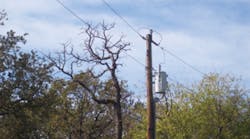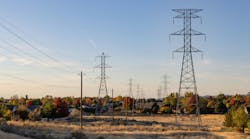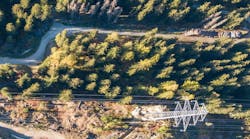Companies that operate in a truly competitive environment vary substantially in strategy and culture from electric utilities. A key strategy for them is to develop a strong brand and once attained, to defend that brand and reputation rigorously. The brand may be based on anything the customer values such as reliability, durability, dependability, ease of use, comfort, luxury, low cost, etc. This applies both to consumer products and to service. Electric utilities have not had to compete on this basis. They sell electrons, indistinguishable between sources, and a service. The service, however, is not competitive because the customer does not have a ready alternative. Given this, the culture associated with developing and defending a brand is missing. Consequently, electric utilities routinely suffer defamatory attacks that in a competitive market would be litigiously repelled. In fact, I believe the culture of electric utilities is exactly the opposite, wishing never to excite or antagonize the public, bending over backwards to placate even the two percent lunatic fringe.
We see the outgrowth of this culture very clearly in the field of VM. We allow beliefs founded on nothing more than wishful thinking to gain traction and become generally accepted. How many utilities operate in areas where local ordinances place limitations on the VM program? Do the politicians who created these ordinances step up and take responsibility for the extent of storm damage? In almost 40 years in this business I’ve yet to encounter a situation where they’ve done so. The utilities take the political and public whipping after a multi-day outage without so much as pointing a finger, much less taking legal action to recover costs.
Is it time to change the culture? Is it time for some offense?
Steve Cieslewicz just wrote an excellent article, “Tree Butchers?”, in ArborAge regarding one of these areas where we have traditionally taken the defensive position. As he points out, utilities are frequently labeled as ‘tree butchers’ and we defend ourselves by pointing out that we followed good arboricultural pruning practices. He also points out that when you have a tree with a genetic predisposition to grow to 100 feet being repeatedly pruned to below 30 feet it can’t help but look ugly and butchered. We would all agree with that description. But is it the fault of the utility? As Steve indicates, it is most likely the fault of the tree owner/planter.
Here is an anecdote from my days as a utility forester. We had gotten into hot water for removing some city boulevard trees, to which the city parks superintendent had agreed if the adjacent landowners wished to have them removed. These were generally poplar species directly under the lines and they did indeed look ugly after 30 years of pruning. Passerby complaints to city hall resulted in us being hastily summoned to a meeting. At this meeting, the city councilors sure of their blamelessness for such disfigured trees agreed to another meeting where we would identify all utility conflicting city owned trees and working with the parks superintendent we would reveal what was there first, the line or the trees. It turned out there were 550 conflicting trees and in every single case, the trees were planted after the line was already in place. I must confess a degree of schadenfreude, some personal pleasure on seeing the council eat crow at that second meeting. We immediately leveraged that into a very successful municipal tree replacement program where we were equal partners rather than us, the utility, having to bear an inordinate amount of the costs.
So how about it, are you ready to go on the offensive? First, when the ‘tree butcher’ accusation is made don’t let it stand. Concede to ugly but point out when someone has planted a tree with a genetic code to grow to 100 feet, well above utility lines, but has to be maintained at 1/3 or less of that height, you must expect a tree that looks disfigured, butchered and plain ugly. Secondly, collect data on all your municipal conflict trees; get the date the line was installed and try to get the data as to when the trees were planted. You might be able to get this information if you offer to replace all the trees where you installed the line over already existing trees. Obviously, don’t give the line installation dates to the municipal authority. Then you can use this as leverage in opposing regulations which would add further to maintenance costs, for getting concessions on clearances obtained and as a minimum to deflect aspersions to the rightful owners.
If you would like to follow or contribute to the discussion that Steve started you can do so at LinkedIn Utility Arborists discussion group.


